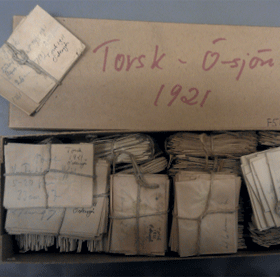One hundred years of fish growth – a call from the archives
Background
Developing and implementing ecosystem-based fisheries management in the Baltic Sea has required a better understanding of the individual growth of various species up to the present. In this project, researcher Henrik Svedäng (Stockholm University and the University of Gothenburg) examines and maps the growthpatterns of flatfish and cod in the Baltic Sea over a period of a hundred years. A longer time series for growth and size structures, for example, can provide a clearer picture of the development of fish and what causes change.
Purpose and goal
The principal purpose is to highlight the potential risks associated with reduced growth, and if that also leads to reduced stocks of flatfish and cod in the eastern Baltic. The goal is to estimate and compare individual growths and productivities amongst different stocks over a hundred-year period, and thus be able to analyse the effects of ecosystem changes and fishing pressure.
Method
Extensive notes and biological material will be obtained from the National Archive in Gothenburg and assembled in a database. This information contains data related to the changes in size of flatfish and cod and it is intended to be compared with generally available studies from the past 25 years. The project will also include chemical analyses of otoliths to create opportunities for evaluating growth patterns in the past and currently, and at what ages these changes usually took place.
Knowledge such as this will make it possible to see contrasts and changes in growths and productivities in relation to changes in fishing pressure and environmental factors. These data can be used to develop ecosystem-based fisheries management strategies to ensure stable yields and restore the size structure of fish populations. The new knowledge will then be conveyed to the relevant administrative bodies such as ICES, HELCOM and Baltfish.
The project is being led by Henrik Svedäng, of the Stockholm University Baltic Sea Centre and the Swedish Institute for Marine Research at the University of Gothenburg.
The project is funded by Thurséus forskarhem and will continue until December 2018.

Project status
Project manager
Henrik Svedäng, of the Stockholm University Baltic Sea Centre and the Swedish Institute for Marine Research at the University of Gothenburg.
Project material
2017-09-21 - Press release
Historical changes in length of the Baltic cod
2017-01-30 - Press release
New project investigates the growth of cod and flatfish in the Baltic Sea







